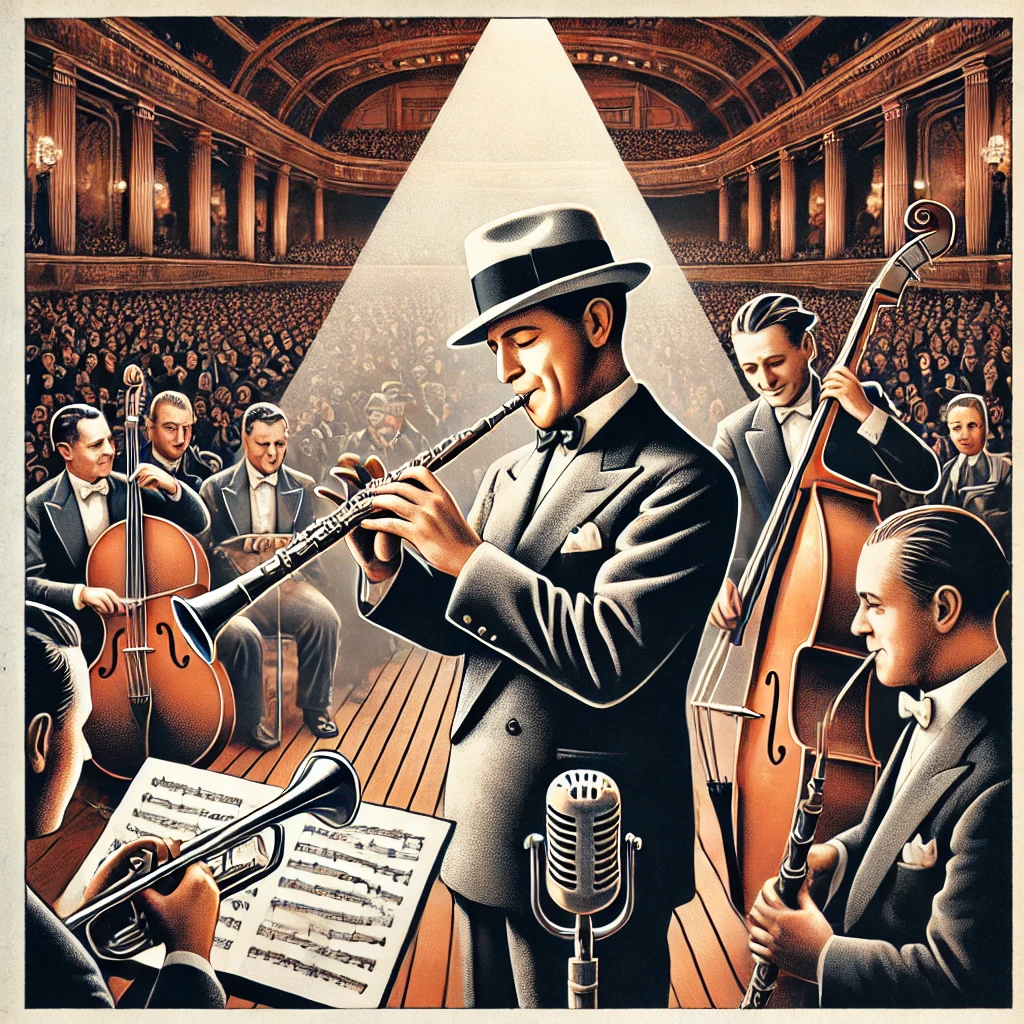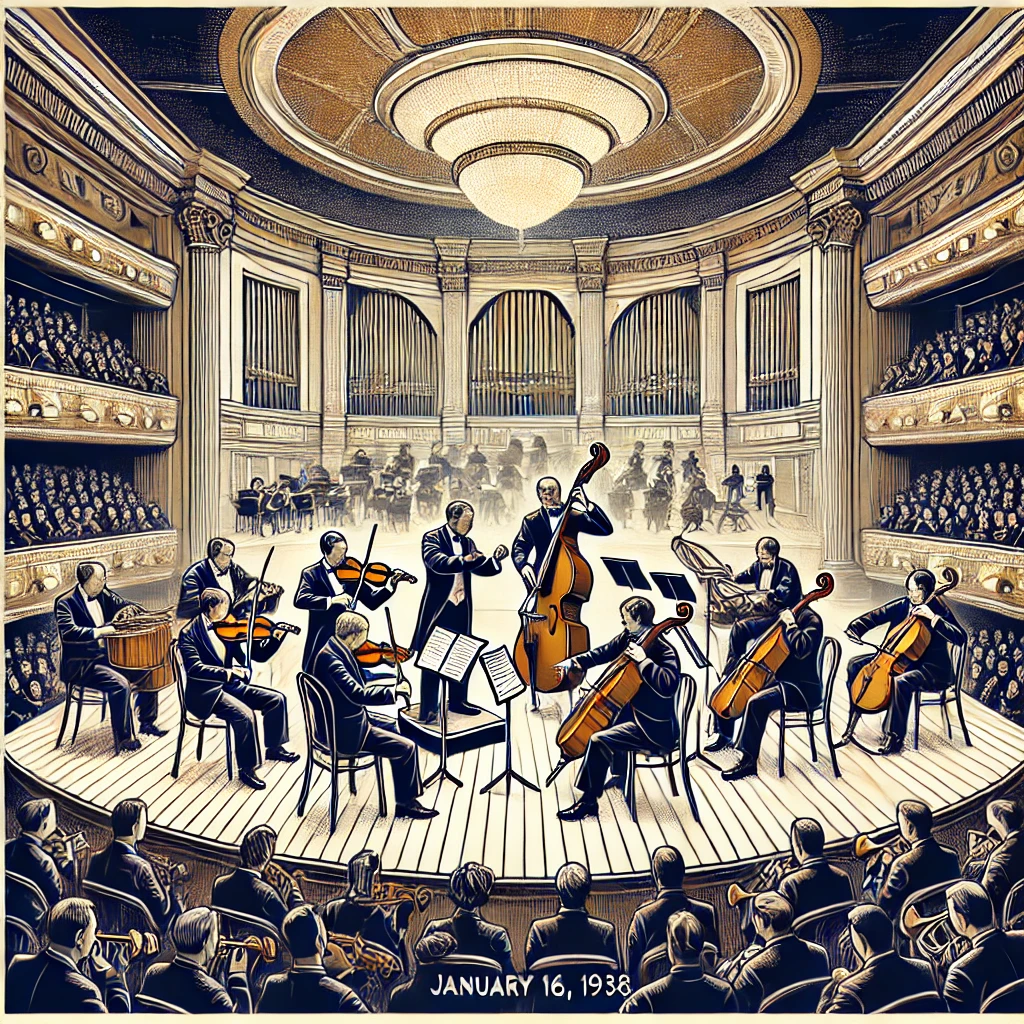A groundbreaking moment in the history of jazz occurred on January 16th, 1938, when Benny Goodman and his orchestra performed at Carnegie Hall in New York City. The concert, now celebrated as one of the greatest in the genre, marked a pivotal moment in jazz history, transcending cultural barriers and elevating jazz to a respected art form. This remarkable event continues to resonate in the music world today, symbolizing innovation, inclusivity, and the transformative power of music.

A Bold Leap for Jazz
At a time when jazz was often confined to dance halls and nightclubs, Benny Goodman took a daring step by bringing it to the prestigious Carnegie Hall. Traditionally associated with classical music, the venue had never hosted a jazz performance of such magnitude. Goodman, already a prominent figure known as the “King of Swing,” understood the significance of this moment. By performing in this revered space, he sought to validate jazz as a sophisticated and legitimate musical genre.
The concert featured a stellar lineup, including Goodman’s orchestra, as well as special guests such as Count Basie and members of Duke Ellington’s band. The program blended swing classics, small group improvisations, and even integrated a history of jazz segment, which traced the genre’s roots from Dixieland to contemporary swing. The night’s highlight was the performance of “Sing, Sing, Sing,” an electrifying 12-minute piece showcasing drummer Gene Krupa’s dynamic rhythms and Goodman’s virtuosic clarinet solos.

Breaking Barriers
Goodman’s Carnegie Hall concert was significant not only for its musical achievements but also for its social impact. At a time when racial segregation was deeply entrenched in American society, Goodman’s integrated band broke barriers. Musicians such as Teddy Wilson on piano and Lionel Hampton on vibraphone performed alongside their white counterparts, sending a powerful message of unity and equality.
This integration was not without its challenges. Goodman faced criticism and resistance for his decision to work with Black musicians. However, his determination to prioritize talent over prejudice set an example for future generations. The concert’s success demonstrated that music could transcend societal divides, paving the way for greater inclusivity in the entertainment industry.
A Legacy That Endures

The Carnegie Hall Jazz Concert’s influence continues to be felt today. Recorded and released as an album in 1950, it became one of the best-selling jazz records of all time, allowing new audiences to experience the magic of that night. Musicians and historians often cite the concert as a turning point that solidified jazz’s place as an enduring and respected art form.
Goodman’s vision and the concert’s success have inspired countless artists to push boundaries and innovate within their genres. Jazz, once considered a fringe style, is now celebrated worldwide for its artistry and cultural significance. The Carnegie Hall performance serves as a reminder of the power of music to challenge norms, foster inclusivity, and bring people together.
